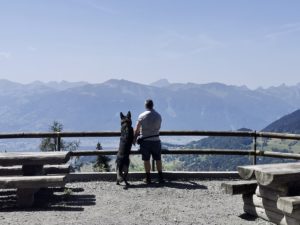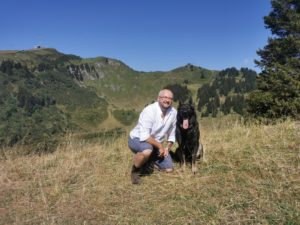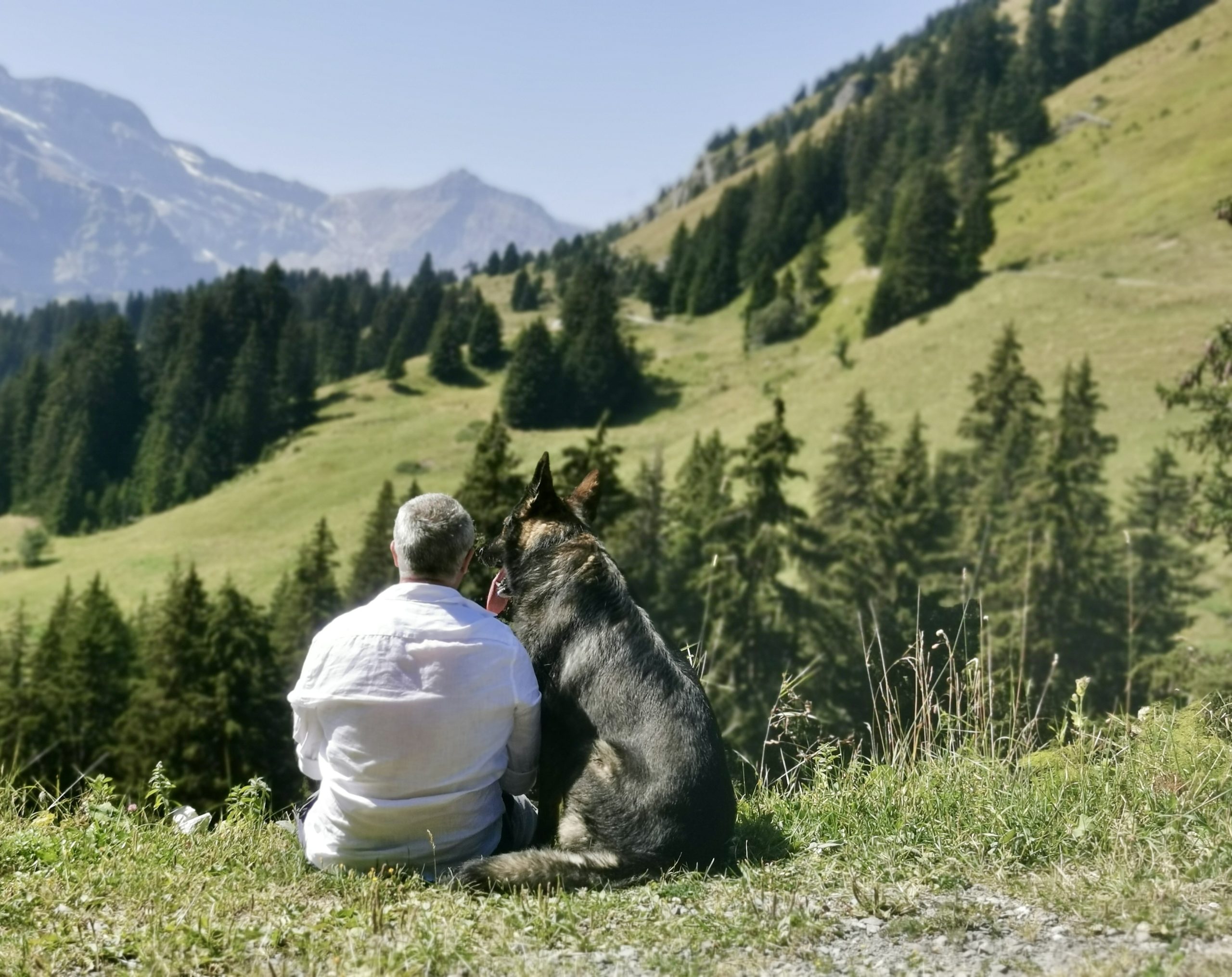We have already discussed breed types, puppy choosing and early development needs, behaviours and leadership in previous blogs. Today, we are moving to the training process and dogs’ learning theory.
My name is James Grey, I am an accredited Kennel Club Dog training Instructor and I work as a dog trainer for the last 39 years. Since 2000, I started focusing on behavioural and emotional aspects of the dog for two main reasons:
- Usual training was often not working and no one could explain me why.
- New studies about dogs’ behaviour, development and cognition became available and they opened a brand new page in dog training and dog-human relationships.
I became more interested in taking on board behaviour cases because I found it very important to dig deeper to see what lays inside of the dog with issues and how I can improve his quality of life. Now, I provide a dog-owner centred care where the relationships and dog’s emotional side are my top priorities. I often use a combined approach using training and behaviour modification techniques to get the best outcome from the dog.
In this blog, kindly offered to me by Lady Wimbledon, I will cover a few moments to support all potential and existing dog owners on their way into successful dog-human relationships.
“Of all the things I’ve lost, I miss my mind the most”
Dog training is a holistic and integrated process. I think it was Patricia McConnell who said that Dog Training is based on three elements: Experience, Knowledge (Science) and Arts. To make our work with dogs successful, we should remember a few principles to follow.
Dogs do not speak our languages – they are not verbal. They do not have any concept of the words we use. We can use any word as a cue whatever suits you best. The shorter the better and one word for one behaviour. Remember – Come and Come On, that many people use for different purposes, sound the same from the dog’s perspective. Using this combination will effectively prevent your dog from having a solid recall.
Dogs are happy to generalise all tasks the same way we do. If you only call a dog by his name without any other command to follow, you effectively teach your dog to start ignoring you. Dogs need to know what you want when you call them!
Here we come to consistency. This works in both – good and bad ways. Consistent and precise trainer will successfully create a chain of behaviours that a dog will be happy to follow because it will be clear and accurate. But if you consistently generalise your requests, if the training protocol to establish the required behaviours is not followed, messages are not clear, the dog will perform worse and worse. The main principle in this process is – if you requested anything from your dog to do, this needs to be accomplished. If you said the command, you should make this happen. The best practice suggests that if you have no time or intention to train your dog in that particular moment, do not use any command at all. It is important to mention that dogs may have their good and bad days. Your dog will be grateful if you learn how to spot it and not push hard if your dog is not in a mood.

The same as dogs, we can feel frustration and impatience if something does not work the way we want, and that is exactly when we make mistakes in dog training. For example, online resources often suggest repeating the wording cue if your dog does not perform the required. However, this does not work in reality for two main reasons:
Your dog does not yet know the command. He simply does not have an idea about what you say and what he needs to do. For example, if your dog does not yet know a Sit command, repeating the word Sit multiple times (even out loud) will not teach him what to do. On the contrary, it will likely to push him away from you and his trust in you will be compromised. We need to link the behaviour to the word first.
Repeating the already known command multiple times will teach a dog that the command consists of 3-5 words – like Sit Sit Sit and they are very good at counting. Give your dog a chance to perform or help him by going back to basic training process.
A special word about treats. Please use something else but kibbles. Natural treats are always better – cheese, dried liver, beef, chicken in your own oven are way better than processed treats you find in shops. Pay attention to ingredients and try to avoid cereals, sugars, salt, wheat and other unhealthy for dogs stuff. Learn your dog’s values and use highly valuable treats for the best performance or for harder exercises.

When I was much younger, I thought I was lazy. Well, I am indeed, but it turned out to be a good quality in animal training. Let’s talk a little about the length of the training session.
Those of you that used my services know that actual training does not take long. Most of the time we spent talking and teaching the owner. We have multiple breaks for a dog during this process because the last thing we want is our dog to become bored and stops performing.
When I was training my own dogs, I used to stop immediately after my dogs performed the required in a way I wanted. That’s what made me think I was lazy. I thought I had to keep on practicing. Luckily, I did not but that was exactly why my dogs always performed well. Now, when I am already an experienced canine behaviour practitioner, I understand why I was successful – if we aim our dogs to succeed, we need to stop training on the dog’s best performance and give a dog a break. If you continue after the best performance, the dog will likely to start performing worse and worse and, then, you will be forced to stop and the dog will learn to never perform well.
This practice of short and successful training sessions brings us to another couple of questions I often receive from my potential clients:
- How long does the session last?
- At what age do we start training puppies? – This question is particularly interesting.
While the training session with your instructor will likely be around one hour, it does not mean all this time we are going to push your puppy to do the obedience exercises. We are focusing on teaching owners to observe a pup, communicate with him clearly and educate him. Quick practical exercises are spread throughout a session during which puppy learns lifesaving skills and behaviours alongside with his owner. It is usually an easy and quite relaxed process that is often perceived as a game by the pup. The whole process is structured into small bits so the learning journey is safe and easy to achieve. We aim to start as soon as your puppy arrives to his new home and we continue outdoors once all vaccinations are sorted.
I understand that the question about the age of the pup to start training is coming from a bit outdated practice of say 1980s when adolescent dogs were brought together in one class and taught continuously with only one short break. By all means, this way of training is not suitable for puppies. It is also not good for the teenage dogs but I am aware that this is still practiced and quite a lot of aversive tools and methods are used there.
What is better – classes or 1:1? This is another common question that owners deal with while choosing a provider.
By all means, 1:1 are always better. However, it is more expensive and may not be an affordable option for some households.
Pros: tailored training to address owner’s needs and puppy’s abilities and characteristics; flexibility to schedule follow ups; natural way of early socialisation; personal approach.
Cons: expensive.
Classes (Group sessions)
Pros: affordable; some puppies are happy to play with other pups; can be a good social club for dog owners.
Cons: generic approach to all; can be stressful for some puppies; trainer’s attention is spread; strict schedule; unlikely suitable for high level energy pups or working breeds.

To choose the most suitable option for your needs, I would suggest to check websites you find on Google/Google Maps to see what is offered, prices, qualification/certification/accreditation and experience of the trainer. I would likely to pay attention on Google or Trustpilot reviews about the business.
“Theory is when you know everything but nothing works.
Practice is when everything works but no one knows why.
In our lab, theory and practice are combined: nothing works and no one knows why.”
Recently, I have run into an interesting thing called “Emergency Recall” (please do not mix with the Emergency Stop I offer, which is different as it requires a different behaviour from a dog rather than coming to you). One of my clients told me about this and I thought it would be worthy to share this with you as another example of consistency and dog training myths.
When we talk about Recall, this ideally should be the best ever command for a dog. It means new adventures, pleasure, joy, happiness, food etc. In this settings, Emergency Recall means two things:
- It is either a marketing trick.
- Or your original Recall is broken and your trainer-to-be will simply use another command to establish a normal Recall.
What usually happens during your dog training process?
You may do exercises indoors or in fenced environment – these both do not have distractions for your dog to challenge with, therefore the training process is running easily for you and your pooch obeys while in there or before they become teenagers.
Once you bring your dog to his usual walking-to-be environment, like Wimbledon Common for example, you suddenly realise that your dog starts ignoring you while being distracted by multiple scents, dogs, squirrels, horses, people (that will effectively re-train your dog to jump on them) etc. In these settings, it is highly likely you will start using your Recall command in a wrong way and this, in turn, will break your Recall from Good to Zero in a very few days.
To summarise the above, I would suggest not to fall into interesting things like “Emergency Recall” but practice your initial Recall in the correct way and in the natural environment where the triggers can be faced and dealt with during your initial training. It does not work otherwise, I am afraid.

Dog training is a continuous journey that never stops. Courses do not guarantee that by the end of your sessions your dog will know all commands by heart. You will need to work with your dog further. Moreover, not everything, that was initially available from the “menu” on the website, will be suitable for your puppy. We always focus first on most important skills like socialisation, impulse control and recall to keep our dogs safe. Some dogs are more challenging, overexcited, energetic or less bonded with their owners. For example, it will be impossible to start working on the Emergency Stop if your dog does not pay attention to you. The same applies to recall – in this case, we start with creating better connections between a dog and his owner, otherwise there will not be any training possible. All dogs are different and have their own personalities. Our role as the trainers is to recognise challenges, address them and navigate owners through the process.
————-
For more help & advice follow James Grey online or contact:
email: james@dogtrainingplanet.co.uk
Tel: 07724 776698
Web: https://dogtrainingplanet.co.uk/
Instagram: https://www.instagram.com/dogtrainingplanet/
Facebook: https://www.facebook.com/DogTraininginLondonuk
Youtube: https://www.youtube.com/channel/UCMJgK0R1AXPzy3puteV8Bnw






